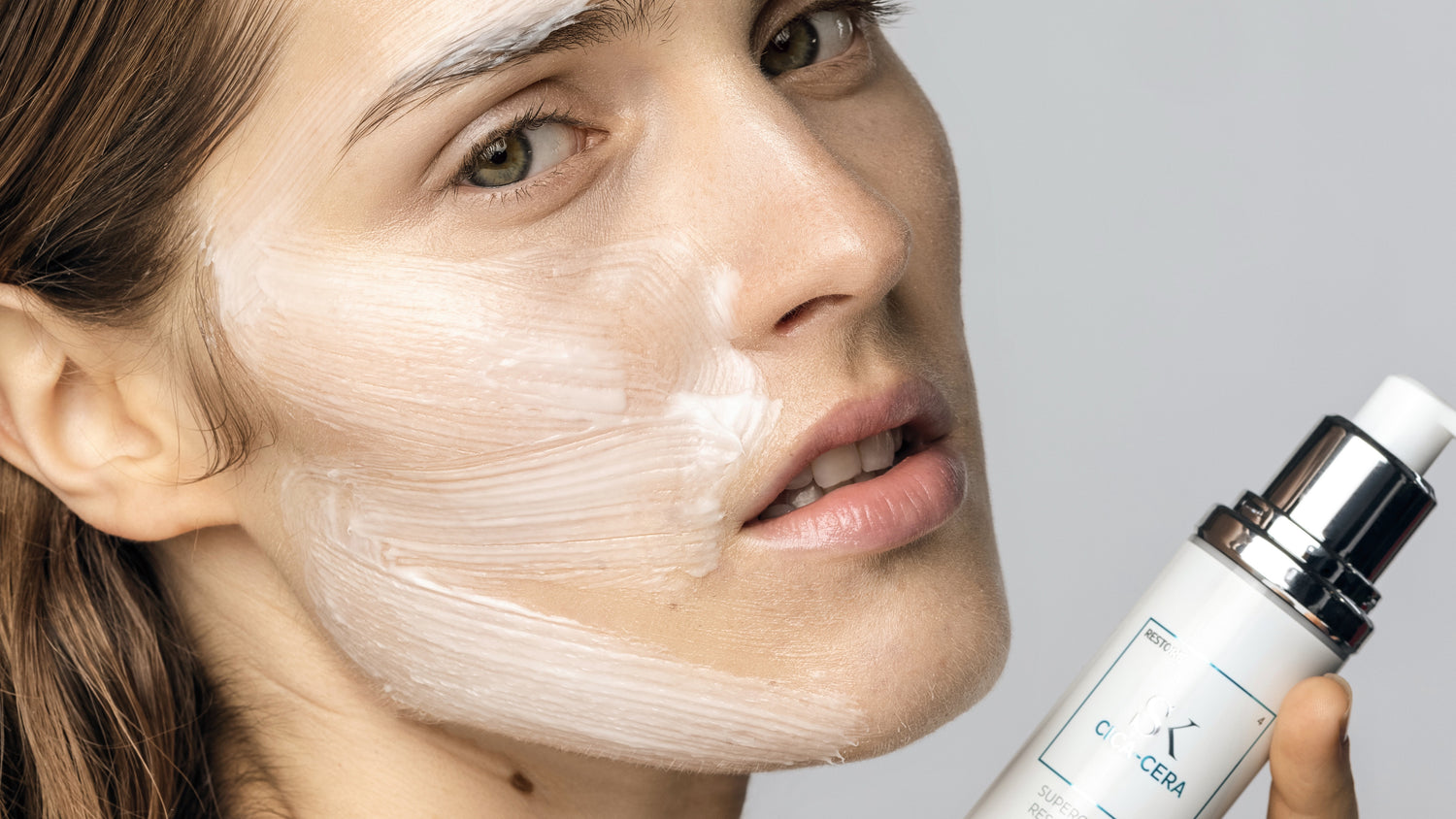A healthy protective skin barrier acts as a resistant shield against environmental stressors, allergens and irritants and prevents excessive water loss, and ceramides are one of its most important components. These are lipids that healthy skin produces on its own, which act as a cement that connects the corneocytes. What are the roles of ceramides, how disturbances in their composition, amount and organization can lead to skin diseases, but also why it is worth including them in the care routine - find out all this by reading further.
What are ceramides and what is their role in maintaining a healthy skin barrier?
The skin is a multi-layered tissue that is designed to protect the body from unwanted external influences. The surface part of the skin or stratum corneum (SC) consists of dead epithelial cells surrounded by hydrophobic lipid lamellar structures. Since lipids form the only continuous region in the SC and consequently substances must pass through these lipid regions during diffusion, the organization of lipids is very important for the function of the skin barrier . The main classes of lipids, which are present in SC in approximately equal proportions, are ceramides, cholesterol and free fatty acids.

Ceramides belong to the family of sphingolipids, and they are made of a relatively small polar head and two hydrophobic chains, which makes them very lipophilic structures that are poorly soluble in water. An interesting fact about skin ceramides is their heterogeneity: 15 subclasses of ceramides have been described to date, which, together with different chain lengths, give hundreds of different chemical structures.
In addition to forming multilamellar lipid membranes between corneocytes and building the stratum corneum , ceramides prevent excessive loss of water from the body and make it difficult for unwanted substances, allergens and microbes, from the environment to enter the body. Therefore, a balanced expression of ceramides is very important for maintaining a healthy epidermal barrier of the skin. In addition, ceramides are equally important in the human body and inside the cell - they regulate several cellular processes , such as cell adhesion, proliferation, epidermal differentiation and apoptosis.
What is the role of ceramide in the pathophysiology of skin diseases?
Even minor changes in the composition, amount and organization of stratum corneum lipids, especially ceramides, lead to a reduced barrier function of the skin, which results in dehydration, increased permeability of allergens and microorganisms from the environment, and even various skin diseases.
In diseases such as atopic dermatitis and psoriasis, the reduction of enzymes involved in ceramide biosynthesis or metabolism may play an important role. In psoriasis, changes in ceramide composition, particularly a decrease in ceramide 1 levels, are associated with reduced retention capacity and increased levels of transepidermal water loss (TEWL). Also, the incomplete differentiation process in psoriasis leads to the creation of a disturbed stratum corneum, which in turn leads to dysfunction of the skin barrier.
In the case of atopic dermatitis, a disorder of the skin's barrier function has also been observed. Research has shown that there are significant changes in the total amount of ceramides, but also in their composition, with the most significant decreased levels of ceramides 1 and 3, which correlate with increased transepidermal water loss.
In addition to skin diseases, it is extremely important to replace ceramides in the care of mature skin , given that their levels naturally decrease with aging, the skin loses elasticity and, due to the compromised hydrolipidic barrier, becomes more susceptible to external influences.

What are the possibilities of topical application of ceramide?
Given that research has proven that the topical application of ceramides improves the function of the skin , especially its stratum corneum, since they possess the ability to protect and restore the barrier function, restore resistance and prevent transepidermal water loss , ceramides are an important subject of interest to the cosmetic industry and part of dermocosmetics formulation.
Skintegra CICA-CERA is a treatment cream that deeply nourishes, hydrates, soothes and strengthens the protective barrier of the facial skin , and is suitable for even the most sensitive skin. In addition to the CICA complex, the main star of this cream consists of plant ceramides , which in their chemical structure are very similar to the ceramides in the skin, and which have been proven to contribute to the improvement of the skin's barrier function by integrating with the ceramides of our skin or stimulating the synthesis of endogenous ceramides.
Skinlick body creams from the Rouge365 and Nude365 lines also contain ceramides for skin protection and renewal. Rouge365 cream is recommended to all lovers of floral-powdery fragrances, while Nude365 cream is ideal for owners of sensitive skin, i.e. those sensitive to essential oils or perfume components.
Literature:
- Bouwstra, Joke & Dubbelaar, FER & Gooris, Gerrit & Weerheim, AM & Ponec, M. (1999). The role of ceramide composition in the lipid organization of the skin barrier. Biochimica et biophysica acta. 1419. 127-36.
- Vávrová, Katerina & Kováčik, Andrej & Opálka, Lukáš. (2017). Ceramides in the skin barrier. Acta Facultatis Pharmaceuticae Universitatis Comenianae. 64.
- Choi, Myeong Jun, Howard, and Maibach. (2005). Role of Ceramides in Barrier Function of Healthy and Diseased Skin. American Journal of Clinical Dermatology . 215-223.
- Coderch, L. & López, Olga & Maza, Alfonso & Parra, José. (2003). Ceramides and Skin Function. American journal of clinical dermatology. 4.
- Tessema, Efrem & Gebre-Mariam, Tsige & Neubert, Reinhard & Wohlrab, Johannes. (2017). Potential Applications of Phyto-Derived Ceramides in Improving Epidermal Barrier Function. Skin pharmacology and physiology. 30. 115-138.

